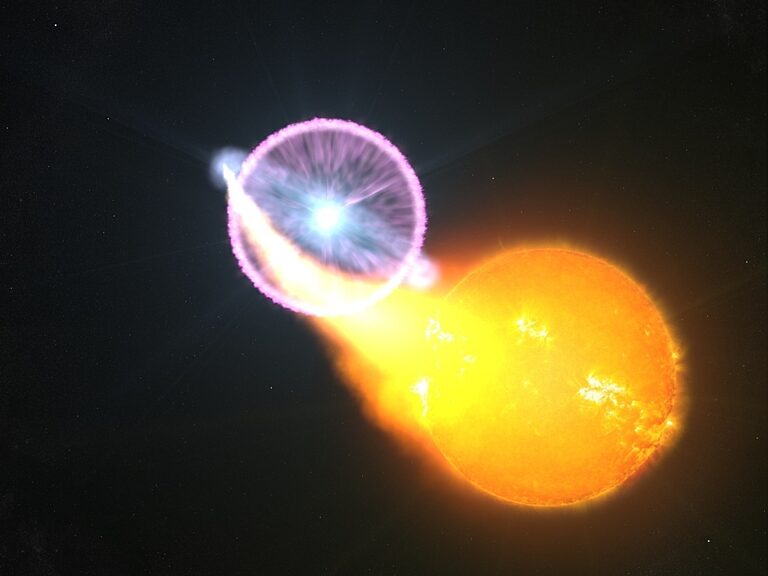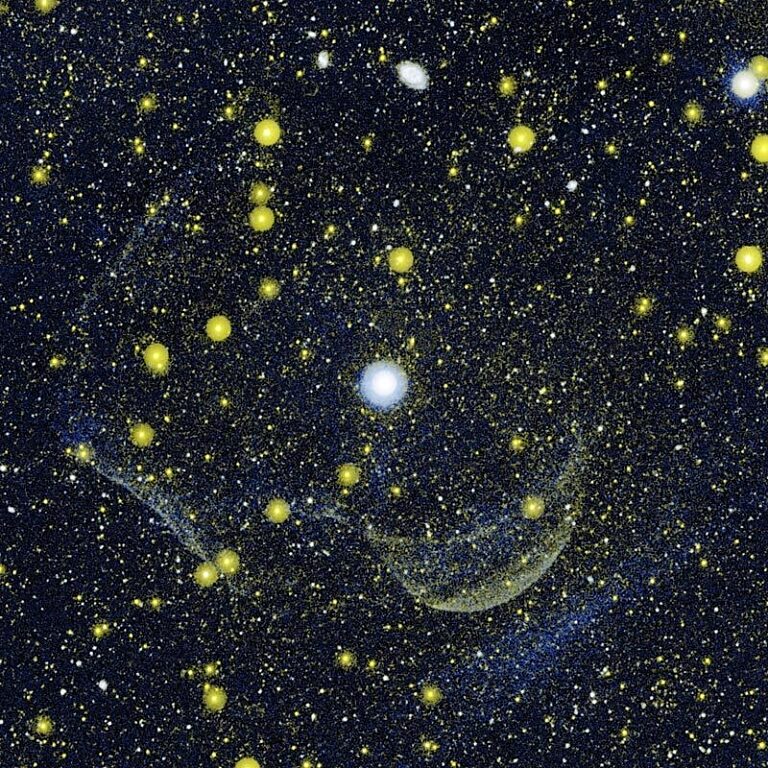Asa Stahl • May 29, 2024
How to see the nova (“new star”) in Corona Borealis
Sometime between now and the end of the year, a giant stellar explosion is likely going to shine in the night sky. This blast, called a nova, is expected to be so bright that it will be visible even from major cities. The explosion won’t pose any danger to Earth — it’s too far away — but over a span of just days, the nova will unleash tens of thousands of times more energy than the Sun puts out over an entire year.
The outburst will come from the star system T Corona Borealis, which puts on a similar show every 80 years or so. Astronomers currently predict about a 70% chance that T Corona Borealis will go nova by September, and a 95% chance that it’ll go off by the end of the year. The nova will likely be the brightest one seen on Earth since 1975.
What causes a nova?
A nova is a runaway thermonuclear explosion that is, in essence, not too different from a gigantic hydrogen bomb. But instead of blasting out of a metal shell, a nova’s explosion happens on the surface of a white dwarf star.

White dwarfs are the smoldering remains of stars like the Sun. Right now, the nuclear fusion of hydrogen in the Sun’s core produces energy that pushes back against gravity and keeps the Sun from falling in on itself. Eventually, though, the Sun will run out of fuel for fusion and collapse until it’s about the size of Earth. At that point, the Sun won’t be able to get any denser without forcing its electrons past a limit set by quantum mechanics. When a star enters this stable, ultra-dense phase, it becomes a white dwarf.
On its own, a white dwarf won’t make a nova. It has to be in a binary system, meaning it and another star orbit one another. If the other star still has plenty of hydrogen, and if it is not too far from the white dwarf, then the white dwarf’s gravity will skim off some of the other star’s outer layers. Over time, this fuel can accumulate on the surface of the white dwarf and heat up. When the fuel gets hot enough, it will ignite in a rapid chain reaction, releasing a giant burst of radiation and throwing off ejecta at thousands of kilometers per hour.
Though this explosion is very energetic, it doesn’t destroy either star. The same pattern of build-up and burst can repeat again and again. T Corona Borealis, in particular, repeats its nova cycle roughly every 80 years. The system consists of a white dwarf and a red giant star located about 800 light-years from Earth.
What’s the difference between a supernova and a nova?
A supernova is a much bigger stellar explosion that does not happen more than once to the same star. Some supernovae are triggered when a star runs out of fuel for nuclear fusion and collapses, while others are caused by white dwarfs that accumulate enough mass. Regardless of the exact path, the source of a supernova has to be so massive that its gravity overcomes the quantum mechanical pressure that would keep a white dwarf stable. And while a nova leaves its star system intact, a supernova results in a neutron star or black hole, or completely destroys whatever object triggered it.
Supernovae are also rarer than novae. The last supernova to happen in the Milky Way was in 1604, while the last nova was in 2024, though it was too dim to see with the naked eye.

How do we know a nova is going to happen?
Some novae repeat relatively often, once every hundred years or more. If people observed these “recurrent novae” when they happened in the past, scientists can compare how light from the system changed in the lead-up to each outburst and look for similar behavior today.
People have recorded novae from T Corona Borealis four times in the past. In 1217, an abbot in Germany wrote about it as a “wonderful sign.” In 1787, the nova was spotted again by an English astronomer. And in 1866 and 1946, scientists around the world took detailed measurements of how the system’s brightness changed over time.
In 2015, astronomers noticed that T Corona Borealis was entering the same sort of phase that preceded its 1946 outburst by eight years. They initially predicted the system would erupt in the mid-2020s. Over time, researchers have narrowed the timing down to about a 70% chance of an outburst by September 2024 and a 95% chance of it by the end of the year.
How to see the T Corona Borealis nova
When it goes nova, T Corona Borealis should be visible to the naked eye at night from even relatively bright skies, like those in the middle of urban areas. It will dim significantly within days, though, so the best time to try to spot it will be as soon as the news breaks.

At that point, the nova will be about as bright as Polaris, the north star, which is among the top 50 brightest stars in the entire night sky. As the nova dims to the point where it’s no longer possible to see with the unaided eye, it may still be possible to view through binoculars or other special equipment.
The nova will appear in the constellation Corona Borealis, or “northern crown,” which is located between the Hercules and Boötes constellations. This part of the sky should be visible from most places on Earth except for the far south, close to Antarctica. The nova won’t look like an explosion, but like a new star that wasn’t there before. So, to fully appreciate this celestial event, it’s worth looking up and noting that you can’t see the system before it goes nova.
Editor's note: This article previously stated that the last nova to be detected in the Milky Way was in 2022; this was incorrect, and has been updated to 2024.
Support our core enterprises
Your support powers our mission to explore worlds, find life, and defend Earth. You make all the difference when you make a gift. Give today!
Donate

 Explore Worlds
Explore Worlds Find Life
Find Life Defend Earth
Defend Earth

